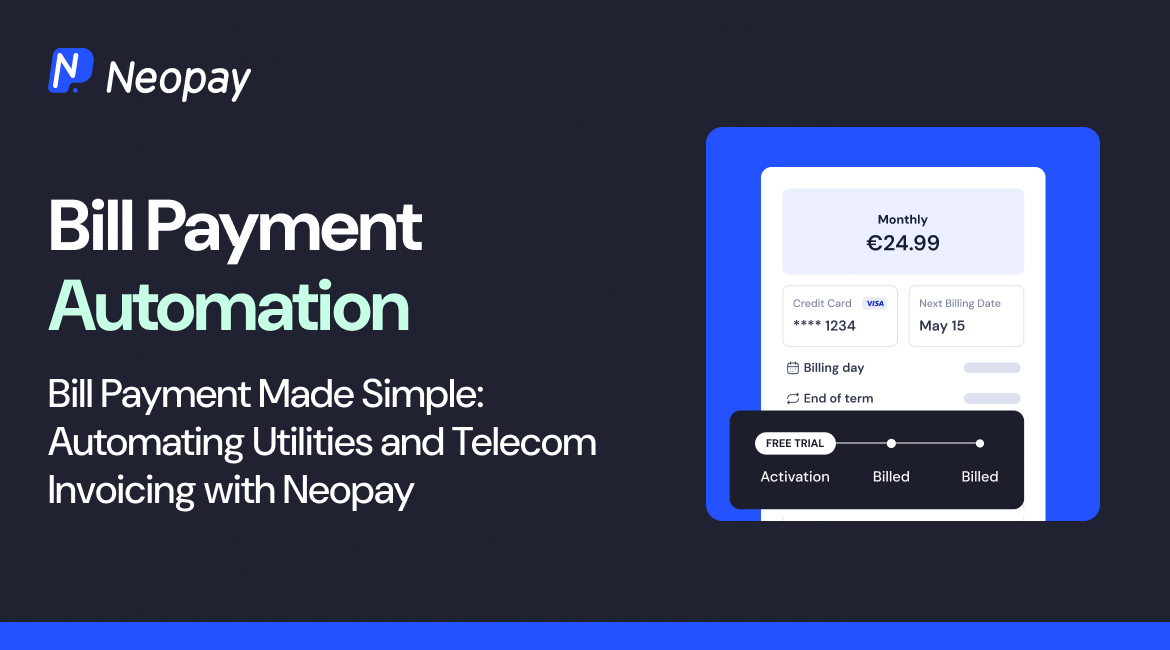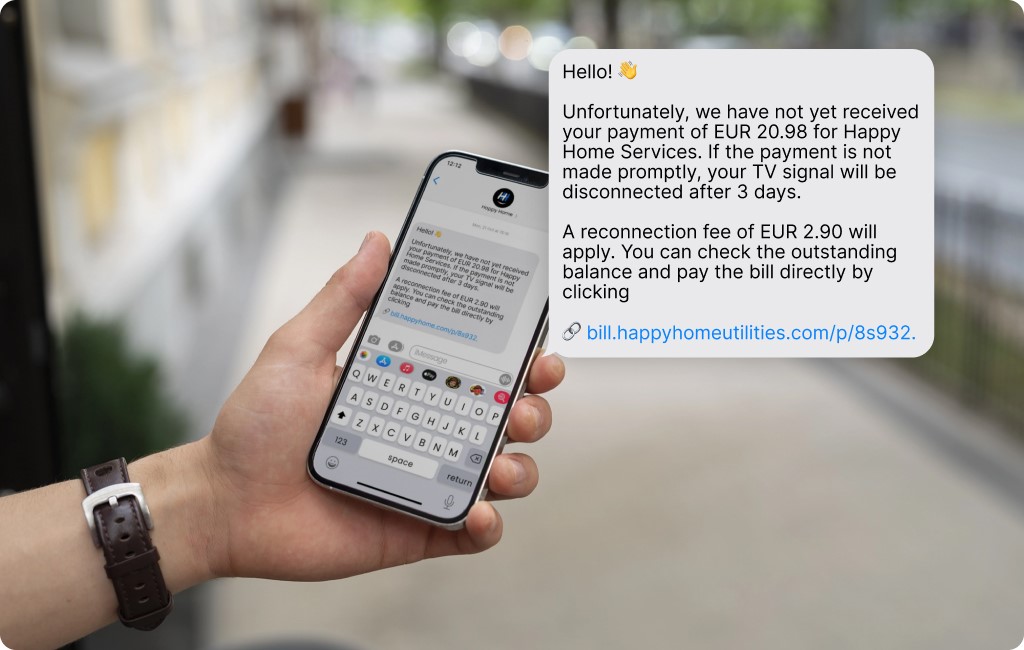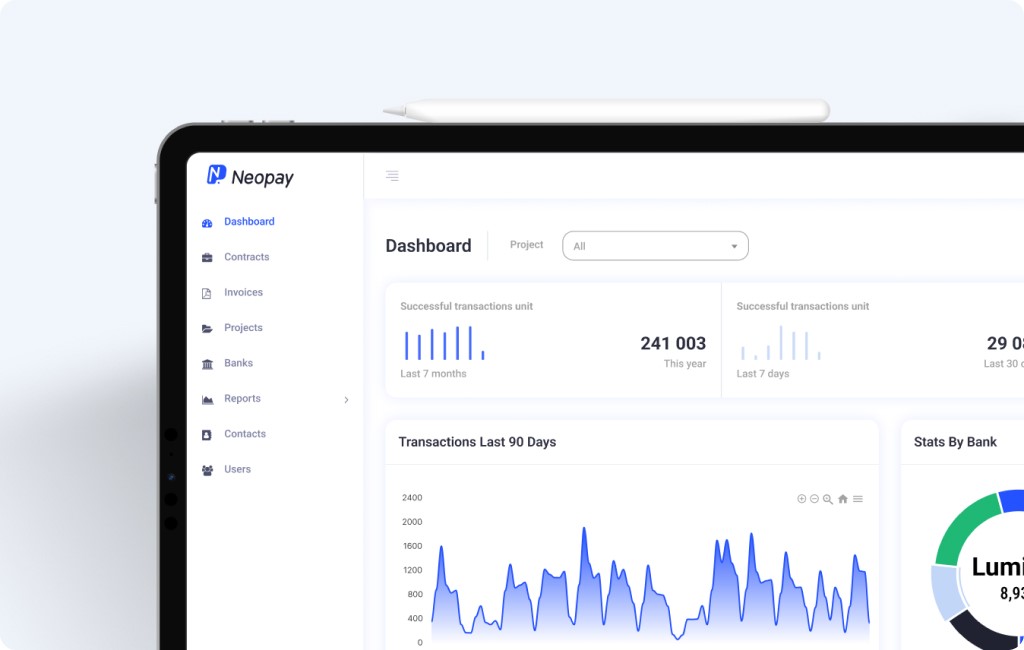
In today’s fast-moving digital world, running operations efficiently is more important than ever—especially for industries like utilities and telecoms. These companies handle huge numbers of customer bills and payments every month. Manual invoicing is slow, causes mistakes, and takes up too much time. Automation isn’t a luxury anymore; it’s a must-have. Neopay is a solution designed to make billing, collections, and communication easier for these industries, helping turn a slow and complex process into a smooth one.
For a utility company (like water, gas, or electricity) or a telecom provider (like internet or mobile), sending bills and collecting payments from lots of customers is the foundation of the business. Old ways of billing, like sending paper invoices, cause a lot of problems. Making invoices by hand is slow and mistakes can easily happen. Sending paper bills costs money and causes delays. This means finance teams often spend too much time answering calls about late or missing payments and trying to match payments with invoices using spreadsheets. All this wastes resources, slows down cash flow, and can hurt customer satisfaction.

Why do these companies still struggle with manual billing? There are just so many transactions, different types of service plans, and usage-based charges that it’s easy to make mistakes or lose track. When there are billing errors or delays in collecting payments, companies run into cash flow problems and unhappy customers. Bill payment automation solves these issues. By automating things like creating invoices, collecting regular payments, sending reminders, and handling reconciliation, companies can save time, make fewer mistakes, and improve their cash flow. Neopay brings all these steps together in one platform, making the whole billing process much simpler.
Utilities and telecom companies have special challenges that make manual billing very hard and inefficient. Automation isn’t just for convenience; it’s needed to stay profitable and keep customers happy.
Utilities like water, electricity, and gas send out thousands or millions of low-value bills every month. Handling all this by hand is a nightmare. Mistakes and delays become almost impossible to avoid, and even small payment problems add up to big costs.
Telecom companies have complicated billing too. They offer different service plans, add-ons, discounts, and variable charges for things like data or calls. Doing this manually makes errors likely, which can frustrate customers and lead to complaints. When payments are late or missed, companies may need to disconnect services, which can make customers leave for good.
The main pain points for both industries include:
Neopay’s platform solves these problems. It uses a centralized rules engine to help with regular payment scheduling (like ACH and SEPA Direct Debit), has automatic retry options for failed payments, and can handle complex billing cycles with less manual work.
The key to efficient automated billing, especially for recurring services, is a solid setup for direct debits—like ACH in the US and SEPA Direct Debit in Europe. Neopay makes it easy to collect customer permissions, set up payment schedules, and manage failed transactions.
Mandate Collection & Verification:
Getting the customer’s approval (called a “mandate”) is the first step for direct debits. This is especially strict in Europe with SEPA. Neopay offers a secure online form where customers can give their digital signatures and permissions. Everything is stored safely and kept for records. For technical details, see the Neopay documentation.
Scheduling & Frequency Rules:
Once mandates are collected, Neopay lets you easily schedule regular payments. Companies can pick monthly cut-off dates, decide which day to collect payments, and set how often to try collecting. Neopay automatically adjusts for things like months with different numbers of days or leap years, so billing stays accurate without manual work.
Automatic Retry Logic:
Failed payments happen in any big billing system. Neopay handles this with smart, automatic retry rules. For example, you can set the system to try again twice at 3-day intervals before marking the payment as failed. This increases collection rates and saves staff from having to chase payments.
json
CopyEdit
{
"retry_intervals": ["3d", "7d"],
"max_retries": 2
}
The dashboard makes it easy for teams to see the status of retries and keep track.
Regional Nuances (ACH vs. SEPA):
It’s important to follow local rules. In the US, ACH payments need to meet specific NACHA rules and file formats. Neopay ensures this. In Europe, SEPA Direct Debit has its own requirements, like advance notice for debits and specific timelines. Neopay is built to handle these differences, so companies don’t have to worry about the details.
Neopay helps answer questions like, “How do I collect and store valid mandates?” or “How do I set up retry intervals to avoid disconnecting customers too soon?” The platform guides users and clearly shows which fields are needed for ACH or SEPA Direct Debit.

Making sure all financial data matches up is crucial for any business, especially with so many transactions. Neopay helps by providing detailed reports and easy integration with ERP systems, so your finance team can save time and avoid mistakes.
Neopay Reconciliation Reports:
Neopay provides:
ERP Connection Patterns:
There are two main ways to connect Neopay with your ERP or billing system:
Mapping Fields to ERP:
You’ll need to match fields from Neopay to those in your ERP. Common mappings are:
Error Handling & Exceptions:
A good reconciliation process also needs to handle mistakes:
By setting up these tools, companies can be sure their financial records are accurate and closing the books is easier.

Automating bill payments brings big benefits, but you have to do it right. Here are some tips and things to watch out for if you’re using a system like Neopay.
Threshold Optimization:
Regional Bank Rules:
Retry Schedule Pitfalls:
Communication Gaps:
Security & Compliance:
By following these best practices, utilities and telecom companies can get the most from Neopay and avoid common mistakes.
Handling lots of bills, payments, and customer messages is tough for utility and telecom companies. Manual work is slow, causes mistakes, and costs more. Automation is the answer.
Neopay helps by automating regular billing and direct debits, streamlining reminders and notifications, providing real-time data, and making ERP reconciliation much easier. With Neopay, you can cut down on manual work, reduce late payments, save money, and give customers a smoother billing experience. This leads to better cash flow, more efficiency, and happier customers.
Ready to make billing easier?
Try out Neopay’s sandbox and set up your first automated Direct Debit in minutes: https://neopay.online/signup
For detailed technical info, read the full Neopay documentation on billing automation: https://neopay.online/docs/billing-automation
By choosing Neopay, utility and telecom providers can focus on what they do best—delivering great service—knowing their billing operations are running smoothly and securely.




.png)
.png)